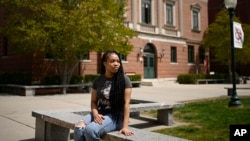Student Union
Test Takers File Suit Over Failed Online Exams
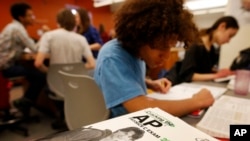
Students who took online tests and received an error message when they hit "submit" have filed a lawsuit against the organization that administers the tests.
The suit was filed in federal district court in Los Angeles and seeks over $500 million in damages after Advanced Placement test takers were told their files couldn't be uploaded or were corrupted.
"The College Board acknowledged that these issues existed, but it did not change its policies to address them," according to the suit filed by Baker, Keener & Nahra LLP and Miller Advocacy Group in Los Angeles.
Advanced Placement (AP) tests allow students to take college-level courses in high school. In some cases, students can test out of college courses, advancing their studies early and saving them money on course fees.
To complete the test, AP science students were required to take photos of their work, upload them to their computer, convert the file, and load them into the test interface. Problems arose when photo uploads of students' work were denied or deemed corrupted.
"On May 24, 2020, after 3 full days of at-home AP exams, the College Board admitted that there was a measurable failure rate in uploading the exams, and it attempted to change its policies going forward," the suit alleges. "The College Board's President David Coleman acknowledged in an email that, 'we can't control the conditions in students' home.'"
Special needs violation?
Besides students, the plaintiffs include the National Center for Fair & Open Testing (FairTest), who opposes "the misuses and flaws" of the standardized testing system, according to Forbes.
Other complications included extreme difficulty securing approved academic accommodations and heightened test anxiety, The Chronicle for Higher Education reported.
The suit alleges that this violated the Americans With Disabilities Act for students with special accommodations. For example, if a student required a quiet testing space and has a legal accommodation, having to take a test at home might not meet that requirement.
The organization's testing procedures are "simple; secure and fair; accessible to all; and valid for use in college admissions," according to the College Board's website.
College Board's reaction
The College Board has stated that only 1% of test takers each day had problems, according to The Chronicle for Higher Education. However, high school teachers and counselors said up to 20% of students could not submit answers.
After receiving complaints about the system, the College Board instituted an emergency procedure, enabling students to email their responses to the organization.
The College Board website instructs students to change their phone's camera settings to capture images as a JPEG file and asks test takers to use the final 5 minutes of the exam to upload their work.
The College Board has dismissed the lawsuit, saying "it is wrong factually and baseless legally; the College Board will vigorously and confidently defend against it, and expect to prevail," said Peter Schwartz, College Board chief risk officer and general counsel, in a statement to The Washington Post.
Typically lasting several hours and administered by a proctor, the College Board introduced online, 45-minute exams after the in-person tests were canceled in March. About 2.2 million students took online exams, the College Board said.
The College Board, which also administers the SAT college entrance exam, has come under fire in recent years as standardized testing falls in popularity.
Students can retake the tests in June.
See all News Updates of the Day
- By VOA News
Amid internship pressure, international students should focus on self-care

That’s the argument of Edhita Singhal, an international student from India studying at the University of Southern California.
Despite the fear of not finding a good internship, it’s important to relax and take care of yourself, she writes in her biweekly column for campus newspaper The Daily Trojan. (April 2024)
- By Tina Trinh
Columbia students on edge as police presence remains on campus after raid to clear protesters
Police remain on Columbia University’s campus, even after clearing out student protesters and their encampment. But questions remain about how the university and the students move forward. Tina Trinh reports from New York.
Columbia University student journalists had an up-close view for days of drama
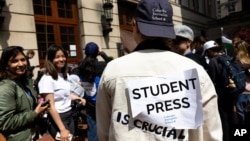
Student journalists on the Columbia University campus knew what was coming long before police with riot shields arrived to begin arresting the pro-Palestinian protesters.
They had watched the situation spiral as the protesters stood their ground, refusing to abandon Hamilton Hall and using a pulley system to bring supplies into the building they had occupied.
The reporters, working for university and online U.S. and international publications, suspected negotiations with administrators were going nowhere when the protesters began donning COVID-era masks to hide their identities. Some began sleeping on the floor in journalism classrooms or offices out of fear of missing something.
But when a journalism professor began writing the phone number to call if they were arrested in permanent marker on their arms, that was the moment it became clear: They were capturing history.
The police operation Tuesday night that cleared out Hamilton Hall capped two weeks of drama over the protests at Columbia, which student journalists at the Ivy League school lived through as they were covering it.
Other media were being kept off campus, so these reporters were the only ones who could capture what was happening.
"I just woke up and I was like, I'm going to go and take some pictures," said Seyma Bayram, a Columbia journalism fellow focused on creating a longform investigative podcast unrelated to the protests.
The encampments were a visual feast. There were musical performances, students reading and helping each other write papers for their classes. She wanted to document it all.
By Monday, students were facing suspension if they didn't leave. Crowds marched around the encampment chanting. Students were given written notices from the administration, warning them to go. They ripped them up, dumped them in trash bins. Rumors were flying.
That night, Bayram was unwilling to go home, sleeping on her office floor.
"How," she wondered, "are they going to remove the students. They're not leaving."
By Tuesday, she was exhausted. The student reporters charged their cameras and other gear and waited.
Many protesters were starting to leave, recalled Shayeza Walid, a graduate journalism student at Columbia, who covered the arrests for the news website Al-Monitor.
The sun was setting as they held hands and chanted, knowing they faced academic repercussions by remaining. Many had given up covering their faces by now, Walid said.
To her, the chants sounded like a hymn and she saw the protesters, some clad in Palestinian keffiyehs, crying. She doubts she will ever forget it.
"It felt so both inspirational and devastating because these were the kids who were willing to get arrested," she recalled.
And then police started assembling outside, setting up barricades. Even on campus, Bayram could tell by the photos posted on social media that police action was imminent. And then the police were there.
"I don't know, it was just like all of a sudden there were just like police, ... riot gear everywhere," Bayram said.
The student journalists were walking backward, filming as they went, Bayram said.
She was pushed off campus. Police buses and officers were everywhere. Around her, people were being arrested.
"Those of us who are pushed out, like student reporters and faculty, I think we were just all horrified that no press was present outside of, or inside of, Hamilton Hall," Bayram said.
Walid recalled that the reporters paired up for safety. Her partner, an international student, had never seen so many police in one place. "And frankly, I hadn't either," Walid said.
She said the police also seemed shocked when they came into campus and saw how few students were left. "It was very evidently disproportionate from where we were standing," she said.
Before the arrests, protesters inside the campus used a megaphone to lead those protesting outside in chants, recalled Cecilia Blotto, a graduate journalism student, who has been publishing photos and video to Uptown Radio, a project of the university's journalism program.
"Columbia, you are a liar," she recalled them chanting, along with "Disclose, divest! We will not stop, we will not rest."
Then Blotto saw police buses pull up, officers exiting with shields and zip ties. Then they played a recording saying that if the protesters didn't disperse they would be arrested.
"People were like being dragged out on the street, with like four cops holding a leg and an arm each. I saw some really, like, striking images of people, like, yelling shame at the cops, while they were dragging out students," Blotto said. She tried to film it all.
Emily Byrski, a graduate student who had a phone number written on her arm in case she was arrested, said the students weren't totally unprepared. There had been a training session.
Still, she said, there had been so many false alerts.
"It's like the boy who cried wolf. Like, there were two or three nights here where we were told, there was a rumor going around that the NYPD was coming, please come to campus," she recalled.
Byrski had knee surgery earlier in the year, so was unable to run as police descended. She limped along with her buddy.
"So we're sort of seeing this all happen from inside and trying to document it as the NYPD is grabbing people, like shoving them to the ground. It was pretty horrifying to see, like, right a foot away from me," Byrski said.
She said she has seen professors cry over the last week. She is pondering it all, uncertain what to make of it.
"I'm just sort of in shock," Byrski said. "I think we all kind of were in shock."
Botched US student aid application form rollout leaves many in limbo
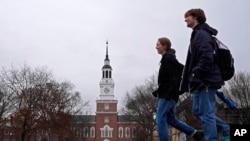
The last thing standing between Ashnaelle Bijoux and her college dream is the FAFSA form — a financial aid application that's supposed to help students go to college but is blocking her instead. She has tried to submit it over and over. Every time, it fails to go through.
"I feel overwhelmed and stressed out," said Bijoux, 19. She came close to tears the last time she tried the form. "I feel like I'm being held back."
Normally a time of celebration for high school seniors, this spring has been marred by the federal government's botched rollout of the new FAFSA application. By May 1, students usually know where they're headed to college in the fall. This year, most still haven't received financial aid offers. Three months before the start of fall classes, many don't know where they're going to college, or how they're going to pay for it.
"We're asking them to make probably one of the biggest financial decisions — and decisions that will have the biggest implications on their lives going forward — without all of the information," said Justin Draeger, president and CEO of the National Association of Student Financial Aid Administrators.
FAFSA, or Free Application for Federal Student Aid, went through a massive overhaul that was supposed to make it simpler and shorter. But a series of blunders by the Education Department made it harder than ever, delaying college decisions by months and raising fears that hundreds of thousands of students will forgo college entirely.
Across the United States, the number of students who have successfully submitted the FAFSA is down 29% from this time last year, and it's even worse at schools with more low-income students, according to the National College Attainment Network.
The group's CEO, Kim Cook, warned members of Congress this month about a potentially "catastrophic" drop in college enrollments that would make the decreases of the pandemic seem mild.
For Bijoux of Norwich, Connecticut, the FAFSA problems threaten to undermine the promise of higher education.
To her, college is a chance to seize the opportunities that weren't available to her mother, who immigrated from Haiti to the U.S. as an adult. Bijoux hopes to become a therapist and set a positive example for her three younger brothers.
If her FAFSA goes through, she should be eligible for enough financial aid to help with the $13,000-a-year tuition at Southern Connecticut State University. If not, she might go to a local community college, but even that would require loans if she can't complete the FAFSA.
"That's why it hurts, because it's like you work so hard to go somewhere and do something and make something of yourself," Bijoux said. "I thought I would start at a four-year (college) and then work hard continuously, like I've been doing basically my whole life. But that's not the case."
The updated FAFSA form has one section filled out by students and another by their parents. But when Bijoux finishes her part, nothing shows up on her mom's online account. She keeps trying, but nothing seems to change.
Similar problems have been reported across the country, along with numerous other bugs that the Education Department has scrambled to fix. Families who call for customer service have faced long wait times or say the call center hung up on them.
It "drains all the momentum" from families working to send their children to college, especially those navigating the process for the first time, said Anne Zinn, a counselor at Norwich Free Academy, where Bijoux goes to school.
"I can only say so many times, 'Just be patient, just be patient,' before they throw their hands up and they're like, 'Why am I doing this? I'm just going to go get a job,'" she said.
The rollout has attracted bipartisan criticism in Congress, and it's being investigated at the request of Republicans. Last week, Richard Cordray, the federal student loan chief who oversaw the FAFSA update, announced he's stepping down at the end of June.
For colleges, too, the delays pose a major threat.
Enrollment decreases like those being projected now could put many small colleges out of business or necessitate deep cuts in staff. Some colleges are pushing for emergency relief just to stay afloat, said Angel Pérez, CEO of the National Association for College Admission Counseling.
"If they don't get checks from the federal government to basically get them through next year, they will not survive," Pérez said.
FAFSA has been the linchpin of student financial aid for decades. It's used to determine eligibility for the federal Pell grant, a scholarship for low-income students, and it's required to receive federal student loans. Colleges and states also use FAFSA to distribute their own scholarships.
FAFSA had long been maligned for being tedious, difficult and intimidating to families without college experience. Congress passed legislation in 2020 meant to simplify the form. The Education Department was ordered to reduce the number of questions from more than 100 to about 40 and change the formula to expand aid to more students.
Problems started piling up as soon as the new form went online in December, already months overdue.
The first applications were incorrectly processed using an outdated calculation for inflation. Later, a federal contractor miscalculated a different formula on more than 200,000 applications. Each mistake added to delays, leaving students waiting longer to hear anything about financial aid.
Even more worrisome is a misstep that blocked students from finishing the form if they have a parent without a Social Security number. Advocates say the system locked out hundreds of thousands of students who are U.S. citizens or permanent residents but whose parents are not.
The Education Department on Tuesday said it's giving those parents a new way to enter their tax information manually. But as recently as this week, some students said they were still blocked from submitting the form.
Federal education officials say they're addressing lingering bugs but making progress. More than 8 million student applications have now been processed and sent to colleges, the agency said, and new applications are being processed within three days.
Still, the wait is far from over. It usually takes weeks for schools to prepare financial aid offers. Some colleges have extended decision deadlines to give students more time to weigh their options. But some stuck to May 1, forcing students to choose a college — and make a nonrefundable payment to hold their spot — without knowing all their scholarship options.
In Baltimore, Camryn Carter is waiting to find out if he'll get a full ride to the University of Maryland or face tens of thousands of dollars in student loans.
A top student and captain of his baseball and wrestling teams, Carter sees college as a step up in life. He thinks back to the times in the grocery store line when he had to put items back on the shelf because his mom couldn't afford the bill. A college degree would give him the stability he didn't always have, the 18-year-old said.
But when he looks at tuition, it's intimidating. Along with Maryland, he's also considering McDaniel College, a private school in Maryland. If he enrolls there, he expects to borrow almost $30,000 a year.
"I try to make the best decisions now so I can have a good future," he said. "I'm a little nervous that things won't work out. But I'm faithful."
- By VOA News
Florida program helps migrant students tutor younger children
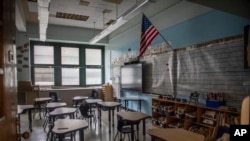
The 40-year-old initiative pairs migrant students in high school with elementary school children. High schools earn college scholarship money for their work. (April 2024)









